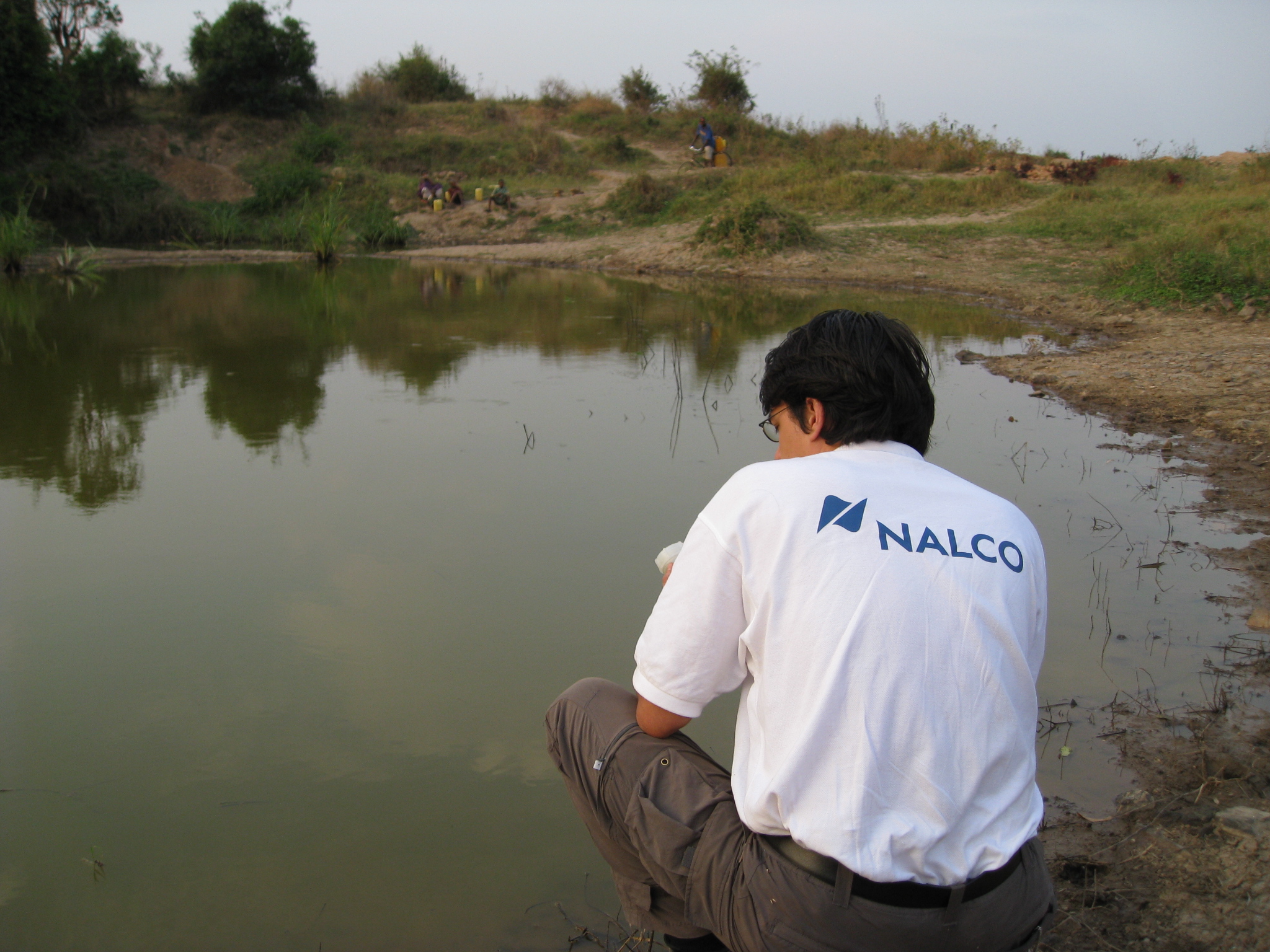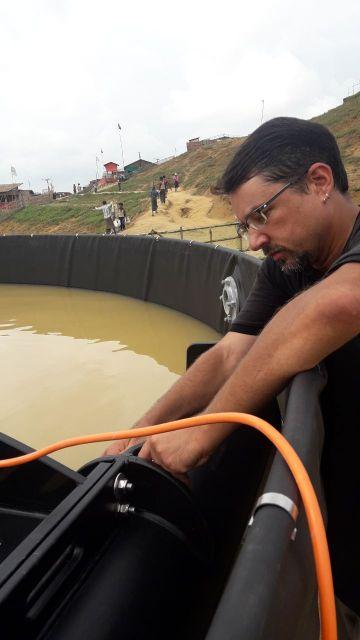Wastewater treatment
The history of the
Semi-mobile wastewater treatment plant (AFWTU type)
After the big Tsunami on Christmas 2004, I was deployed to Southeast Asia for one year in 2005 – 2006 as a drinking water specialist for the German Government. During my deployment, I witnessed a waterborne disease outbreak (bloody diarrhoea) at a new settlement located in North Sumatra. It was the first and only time I had to see something like that. The reason – without going into technical details – was like most of the time an improper wastewater treatment.
Surrounded by the disease, I initially thought, there is nothing I can do. I felt helpless and also useless while the disease outbreak took a heavy turn and caused many casualties among the elderly, weak and children.
I had a very impressive discussion with a medical doctor of a major NGO that is specialized in providing medical services. “There is nothing, we medical doctors can do,” he said. “We can provide infusions, oral rehydration solution and keep the patients here for a few days. Afterwards, they leave the hospital, walking but weakened, and we see them back here two days later in an even worse condition. It’s a water problem that has to be solved, not a medical problem.”
There it was. It could not be medical doctors who would defeat the disease sustainably, it had to be engineers.
Back to Germany in 2006, still deeply impacted and shaken by this horrible incident, I started researching the current wastewater treatment methods in emergency contexts. I have found way less than I thought I would, especially when it comes to mass wastewater treatment in refugee / IDP camps and other dense settlements. While thinking about the problem one night, I watched old science fiction TV shows from the past century.
So, this was supposed to be the glorious “The Year 2000” in the eyes of Sci-Fi authors of the 60’ies. But instead of travelling through space faster than light speed and beaming ourselves from A to B, we were not even able to treat wastewater properly. We must be such disappointments in their eyes.
So I started digging into the subject in 2006 and did not let go for several years.
Many reports of disease outbreaks in refugee camps over the next years up to the horrible Cholera Outbreak in Haiti in 2010 made me understand that there was still much to develop. I felt on the right track. It was a typical nerdy – engineer – drawer project that I have worked on for several years. I later introduced the project to my employers as well as to the Corps of Engineers at the German Armed Forces, where I regularly serve as a reservist officer. The project raised a lot of “morally supportive” but not enough commercial interest in order to somehow try it out with any company, organization or armed forces. It remained as my own personal nerdy drawer project. At that time, I never thought I will ever see the system built and running. Still, it felt like the right thing to do.
In 2017 all of a sudden and out of the blue a major international organization made the decision to develop a wastewater treatment plant for refugee camps and emergencies. When I was called for this task, I volunteered happily.
In 2018 my team and I set up the first, extremely downsized and underequipped prototype of the wastewater treatment plant at the Rohingya Refugee Camp in Cox’s Bazaar / Bangladesh. The plan was to deliver only a proof of concept and disassemble the prototype again after six months. It was just a trial nobody but I expected to succeed. The results and effluent values exceeded even our most optimistic expectations. The OXFAM/ARUP – report rated the system as highly effective and stated low area footprint. Despite the initial plan of disassembly after six months, the system was still running in August 2021.
In 2019 the second, larger system was set up, also at the Rohingya Refugee camp in Bangladesh.
In July 2021 a massive flooding disaster of formerly unseen power hit some parts in Western Germany. Many infrastructural wastewater treatment plants were not only damaged but completely destroyed. Their rebuilding will take several years. Meanwhile, untreated wastewater was running into the Ahr river in the county of Rheinland-Pfalz, just like 100 years ago before the sewage system was implemented. At that time a German NGO had two large systems in stock, purchased for deployment to refugee camps in different parts of the world in order to gain more experience. I was ordered to re-design the concept to actually fit German standards. In August 2021 we set up the first of the two systems in Mayschoss village which is substituting the infrastructural wastewater treatment system until a new one is built and operative. We expect this system to run until 2024.
Further systems to follow soon...







